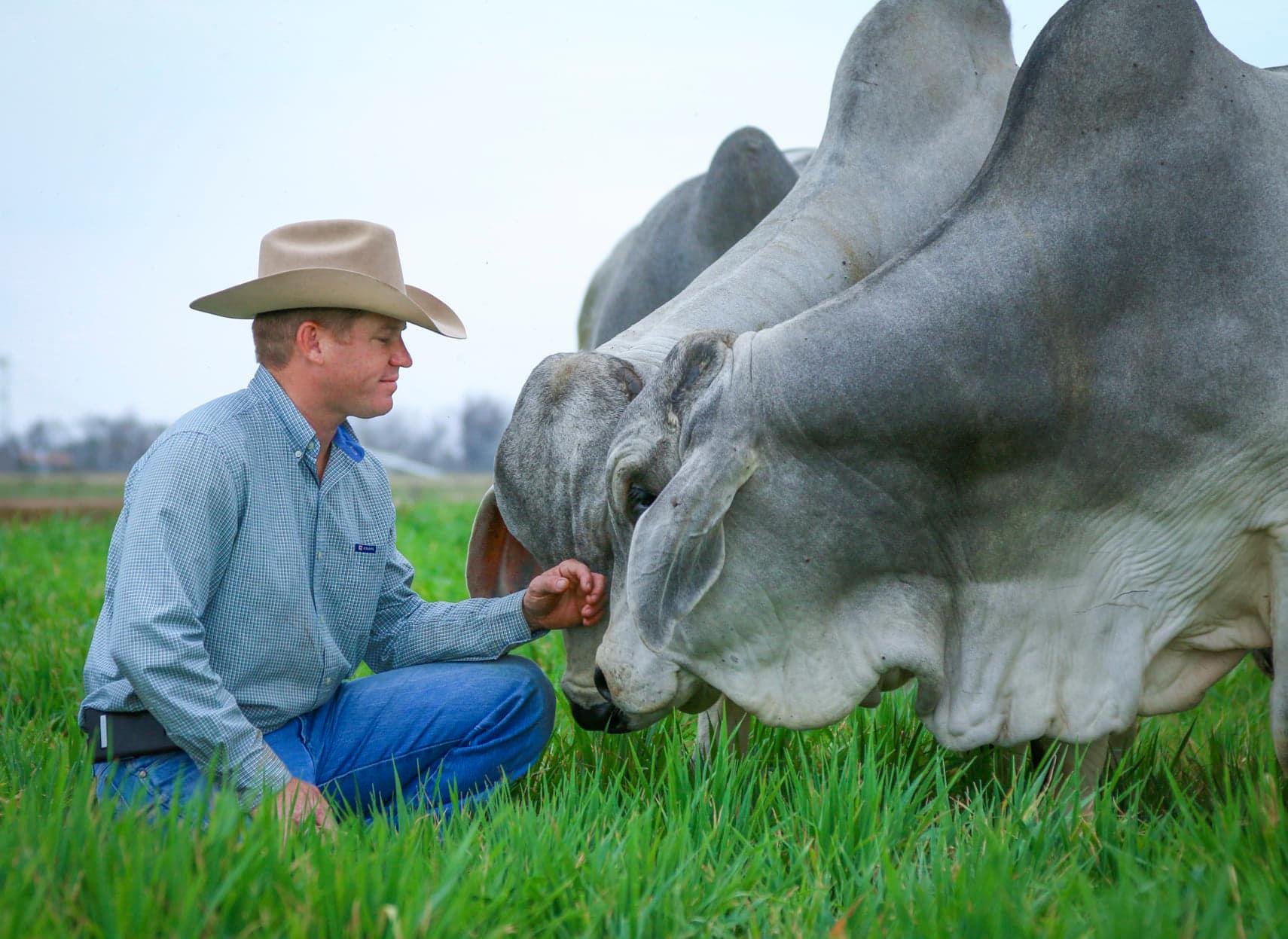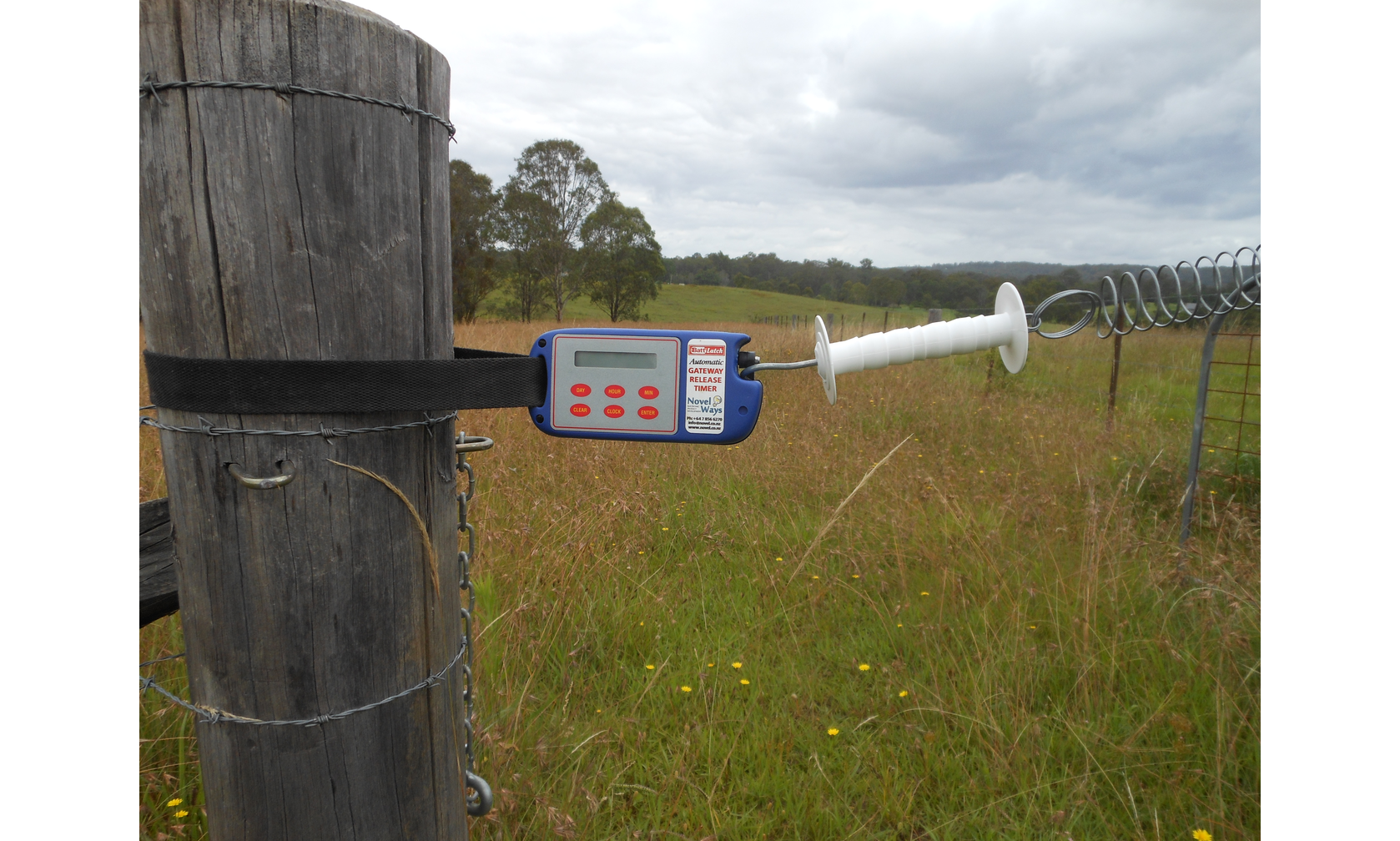
We love spotlighting cutting edge leaders who are pushing the envelope of what’s possible. Whether it’s high stocking density, new ranching methods, or profitability, our PastureMap community includes the most innovative businesses at the top of their game. We sat down with John Coleman Locke of J.D. Hudgins Inc., to talk about his operation.
Q: How would you describe your operation?
A: J.D. Hudgins Inc. is a 100 yr old corporation, a family owned marketing co-op of purebred Brahman cattle. We’re five related families and in 1963 we split into 5 independently operated divisions. We raise and sell high quality, tropically adapted Brahman genetics that are heat tolerant.
Two-thirds of the beef cattle in the world are raised along the equator, so we sell into a global market including Australia, Central and South America, Mexico, South Africa. Domestically, our customers range from Arizona to Missouri, all the way down to Florida. Anywhere it gets hot.
Q: Could you tell us about your grazing management?
A: We started getting serious about grazing management during the 2011 drought. Under the stress of drought and a family succession event, we had to start looking for ways to change. We began resting pastures that had been grazed continuously since the 1940's. We started cell grazing with 4 paddocks per herd and keeping 4 herds separate.
It was a challenge managing our cattle for genetics and breeding while restructuring our business to focus on grazing management. Over the next 5 years, we prioritized learning skills like setting up temporary fences, how to move efficiently, and how to handle a larger mob of cattle.
In 2017, we attended Ian Mitchell-Innes’ workshop because we were not seeing the performance from cattle or grass we expected. We were doing cell grazing, doing twice a day moves, but were still struggling. Ian helped switch on our 'light-bulb' and we switched to high density mob grazing. We started operating upwards of 100,000 lbs of stock density moving multiple times a day.
Q: What do you use PastureMap for?
A: I’m not a 'Type A', person, I’m a fly by the seat of my pants guy. I have a grazing chart on the wall from 2 years ago. I never got around to keeping the records, I could take a picture of it and where would that go? I could not effectively keep up with what we were doing. We’d come in with employee text messages, notes on paper, notes on my phone. We needed something easily accessible to keep records and make sure that we were making progress.
Managing our grazing works great with PastureMap. What I didn’t think would be a value-add when we started, but now has become the biggest benefit, was having the employees ask, “where did you think we needed to go today?" There’s no doubt now. You’re sitting there looking at your phone, they’re looking at the same map on their phone, and they know exactly which paddock to go in.
We used to use paper maps, but when you’re pushing 100 paddocks on 550 acres,here’s a lot of moving parts, not just a giant rectangle. Tracking paddocks and rest periods was huge. Now we can go out and scout grass to see what’s going on, and seeing the rest period automatically right in front of you on the phone. Seeing the history of a paddock, and saying, “This looks really good, what did we do here?” is great. We weren’t able to do that before.
Q:What about people who think that high density stock grazing is too much work?
A: I would say to them: We’re full time ranching, we’re here moving animals every day, why wouldn’t you open a gate twice instead of once?
You could put in a thimble what I learned in the first 5 years. What I have learned in the last 2 years since we’ve been high density mob grazing, wouldn’t fit in a 55 gallon drum. If you move cattle once a day, you have 365 learning opportunities. If you move 10 times a day, you have 3650+ learning opportunities.
Q: What were some of the biggest lessons?
A: Learning what to observe and how to observe it. I had a picture in my mind of what the grass should look like, how tall it “should” be, or what species. Now I’ve learned that it doesn’t matter. I paid very little attention to what the cattle were telling us. Now I observe what they’re telling us through their gut fill, contentment, and behavior. We look at the manure a lot to see if we need to alter our grazing. Then we change density or feed based on what the manure is telling us.
There’s still a lot of challenges, but we have a lot more confidence.
Q: How has this changed your ranch as a business?
A: We have become considerably more profitable since we changed our grazing management. Having an old business, a set customer base, and a set paradigm in the registered industry, people think we’re crazy. When people see cattle in an operation like this, 200 head in a mob, recips mixed with registered cows, it was difficult telling our story until recently. The cattle are performing so well, we made a significant sale on the first day a serious customer visited because the cattle and the grass looked so good. It impressed them.

Q: How did you get to moving 10-12 times a day, without moving fence?
A: I don’t think I would’ve committed to doing this without today's tech innovations. We use Batt Latches, a portable battery powered automatic gate release timer. Pre-programmed by the myself, it can be used on any gate system and takes 5 minutes to set it up. There was lots of trial and error in my shop. Dad told me to buy a game camera that sends pictures to my phone. We can sit there and set up for an hour, leave all day and never have to think about it.
Moving 12 times a day can be practical if you’re operating at the density we are, a back fence is not necessary. We’ll graze away from the water source, off season we even graze towards the water. You can set up fences in 45 minutes to an hour, everything happens automatically.
Q: Why do you need PastureMap?
A: This style of management, it requires technology. You can’t manage what you don’t measure. Unless you are amazing at keeping records on paper, I don’t see any other way to do it in an effective manner. There’s no downside. Unless you’ve only got one cow, it’s hard to see how you can’t make up $500 of efficiencies in a year.
Q: Where do you see it all going?
A: Once you see the change in the landscape, the progress is undeniable. I repeated Ranching for Profit in January of this year. I was blown away by how progressive everyone has become. Pretty good grassroots movement with discussions about micro-biomes and gut health. I don’t see any way it’s not going to become more and more prevalent. It starts with soil.
